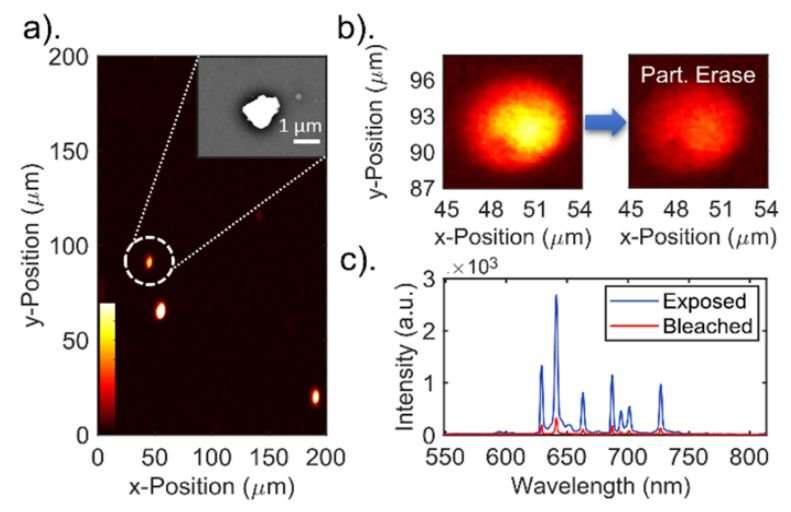Using light for next-generation data storage

Tiny, nano-sized crystals of salt encoded with data using light from a laser could be the next data storage technology of choice, following research by Australian scientists.
The researchers from the University of South Australia and University of Adelaide, in collaboration with the University of New South Wales, have demonstrated a novel and energy-efficient approach to storing data using light.
"With the use of data in society increasing dramatically due to the likes of social media, cloud computing and increased smart phone adoption, existing data storage technologies such as hard drive disks and solid state storage are fast approaching their limits," says project leader Dr. Nick Riesen, a Research Fellow at the University of South Australia and Visiting Fellow at the University of Adelaide's Institute for Photonics and Advanced Sensing (IPAS).
"We have entered an age where new technologies are required to meet the demands of 100s of terabyte (1000 gigabytes) or even petabyte (one million gigabytes) storage. One of the most promising techniques of achieving this is optical data storage."
Dr. Riesen and University of Adelaide Ph.D. student Xuanzhao Pan developed technology based on nanocrystals with light-emitting properties that can be efficiently switched on and off in patterns that represent digital information. The researchers used lasers to alter the electronic states, and therefore the fluorescence properties, of the crystals.
Their research shows that these fluorescent nanocrystals could represent a promising alternative to traditional magnetic (hard drive disk) and solid-state (solid state drive) data storage or blu-ray discs. They demonstrated rewritable data storage in crystals that are 100s of times smaller than that visible with the human eye.
"What makes this technique for storing information using light interesting is that several bits can be stored at simultaneously. And, unlike most other optical data storage techniques, the data is rewritable," says Dr. Riesen.
This 'multilevel data storage' – storing several bits on a single crystal – opens the way for much higher storage densities. The technology also allows for very low-power lasers to be used, increasing its energy efficiency and being more practical for consumer applications.
"The low energy requirement also makes this system ideal for optical data storage on integrated electronic circuits," says Professor Hans Riesen from the University of New South Wales.
The technology also has the potential to push forward the boundaries of how much digital data can be stored through the development of 3-D data storage.
"We think it's possible to extend this data storage platform to 3-D technologies in which the nanocrystals would be embedded into a glass or polymer, making use of the glass-processing capabilities we have at IPAS," says Professor Heike Ebendorff-Heidepriem, University of Adelaide. "This project shows the far-reaching applications that can be achieved through transdisciplinary research into new materials."
Dr. Riesen says: "3-D optical data storage could potentially allow for up to petabyte level data storage in small data cubes. To put that in perspective, it is believed that the human brain can store about 2.5 petabytes. This new technology could be a viable solution to the great challenge of overcoming the bottleneck in data storage."
The research is published in the open access journal Optics Express.
More information: Nicolas Riesen et al. Towards rewritable multilevel optical data storage in single nanocrystals, Optics Express (2018). DOI: 10.1364/OE.26.012266
Journal information: Optics Express
Provided by University of Adelaide





















